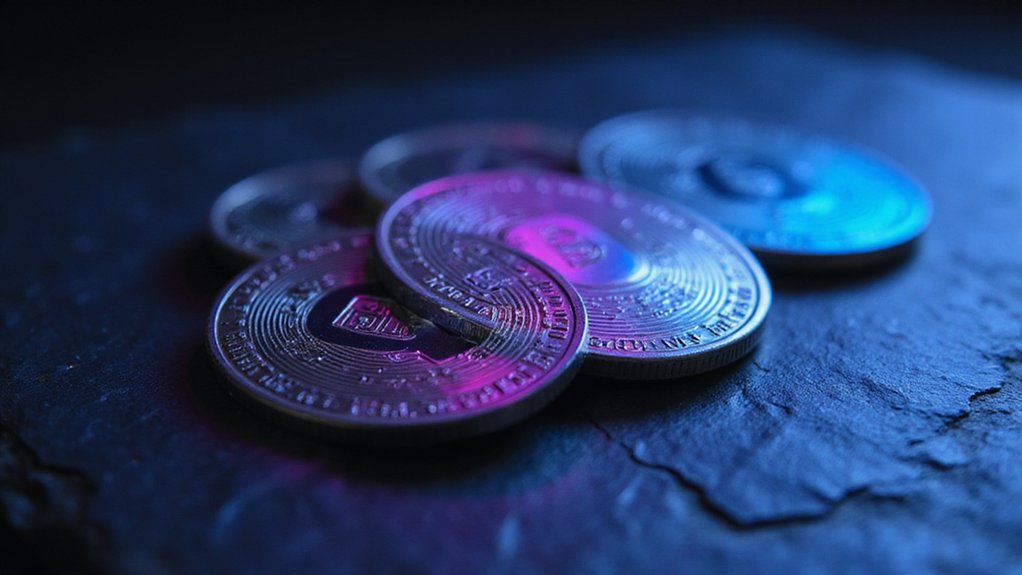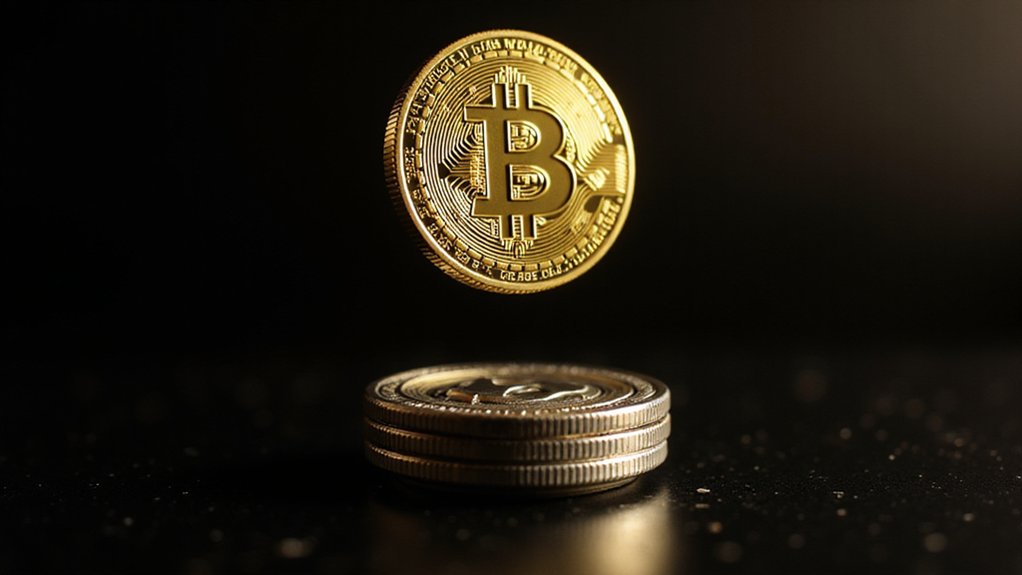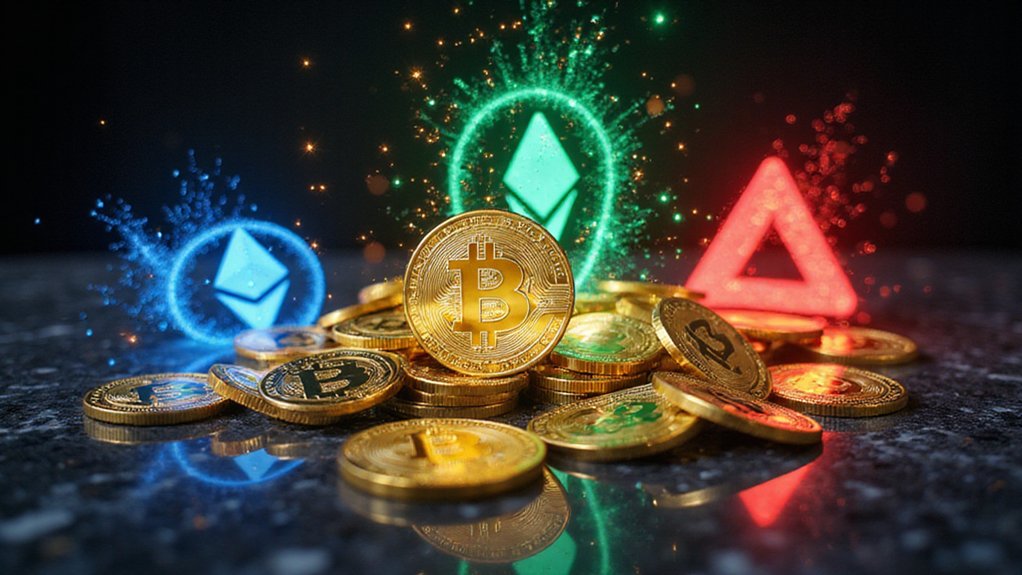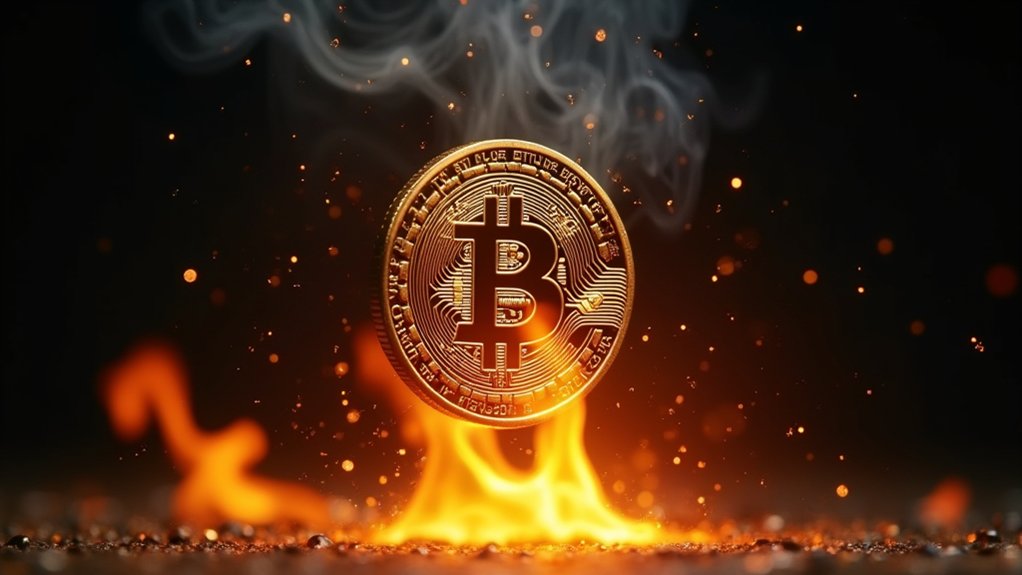While the cryptocurrency market endures another bout of existential angst—with even Ethereum surrendering 25% of its January 2025 value—the tokenization revolution proceeds with characteristic indifference to price action, driven by fundamentally different value propositions across competing platforms.
Ethereum maintains its position as the reluctant patriarch of tokenization, wielding ERC-20 and ERC-721 standards like well-worn scepters while struggling with the decidedly unglamorous reality of prohibitive transaction fees. The network’s ongoing shift to proof-of-stake and layer-2 solutions represents a tacit acknowledgment that being first to market doesn’t guarantee lasting supremacy—particularly when processing transactions begins to resemble paying Manhattan rent prices for suburban amenities.
Being first to market doesn’t guarantee lasting supremacy when transaction fees resemble paying Manhattan rent for suburban amenities.
Solana, meanwhile, has emerged as the speed demon of tokenization, processing 3,500 transactions per second with 400-millisecond block times that make Ethereum’s performance appear positively glacial. The platform’s real-time performance of 1,130 tx/s demonstrates capabilities that extend far beyond theoretical benchmarks, providing practical throughput for high-volume tokenization applications. The SOL/ETH ratio‘s 37.8% climb from January 2024 to June 2025 suggests investors have noticed this technical superiority, gravitating toward a platform where tokenizing gaming assets or financial instruments doesn’t require a second mortgage. Despite its technical prowess, Solana trades at $144.30 with a YTD performance of -23.8%, reflecting broader market sentiment rather than underlying capabilities.
XRP occupies a peculiar niche in this ecosystem, focusing primarily on cross-border payment tokenization rather than the broader asset digitization that captivates other platforms. Ripple‘s partial legal victories have provided the regulatory clarity that allows financial institutions to embrace XRP without fearing SEC enforcement actions—a consideration that remains surprisingly practical amid the industry’s tendency toward regulatory brinksmanship. The evolving regulatory frameworks have fundamentally shifted institutional attitudes toward digital asset integration, creating opportunities for platforms with clear compliance pathways.
Chainlink serves as the often-overlooked infrastructure backbone, providing oracle networks that connect tokenized assets to real-world data. While LINK tokens have declined 35.2% year-to-date, the network’s utility remains indispensable for DeFi protocols requiring trustless external data feeds—a reality that positions Chainlink as the digital equivalent of critical municipal infrastructure.
The tokenization landscape reveals distinct specializations emerging across platforms: Ethereum’s mature NFT markets and securities tokenization, Solana’s high-frequency asset digitization, XRP’s payment-focused approach, and Chainlink’s data verification services. Each platform’s trajectory suggests that tokenization success depends less on universal dominance than on executing specific use cases with technical competence—a surprisingly rational development in an industry not known for measured approaches.









